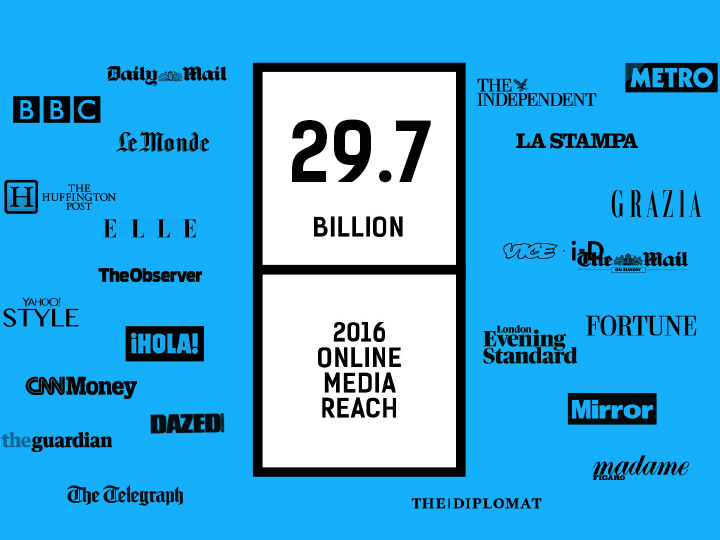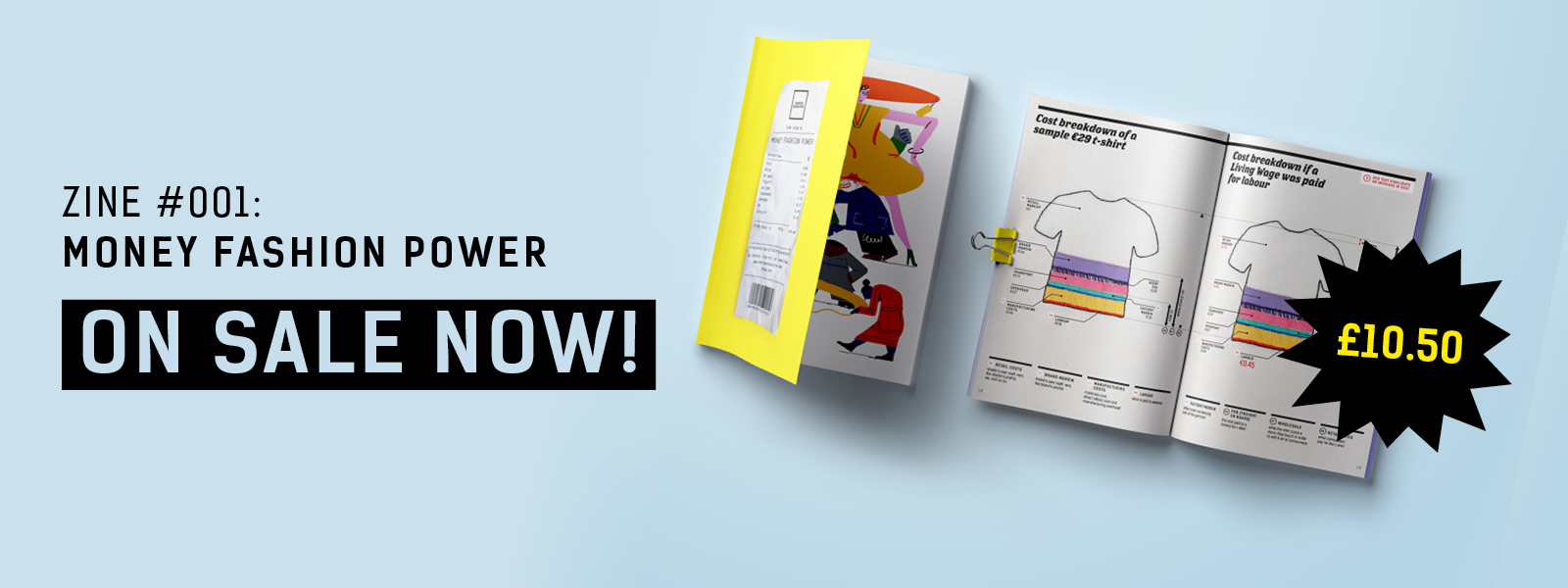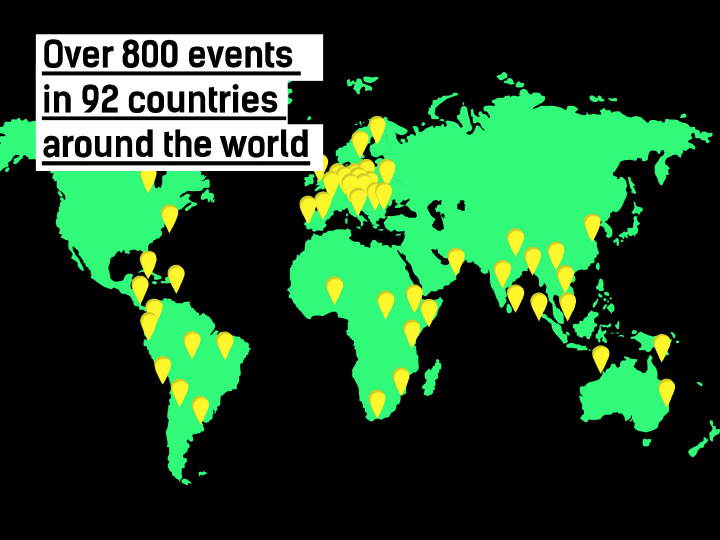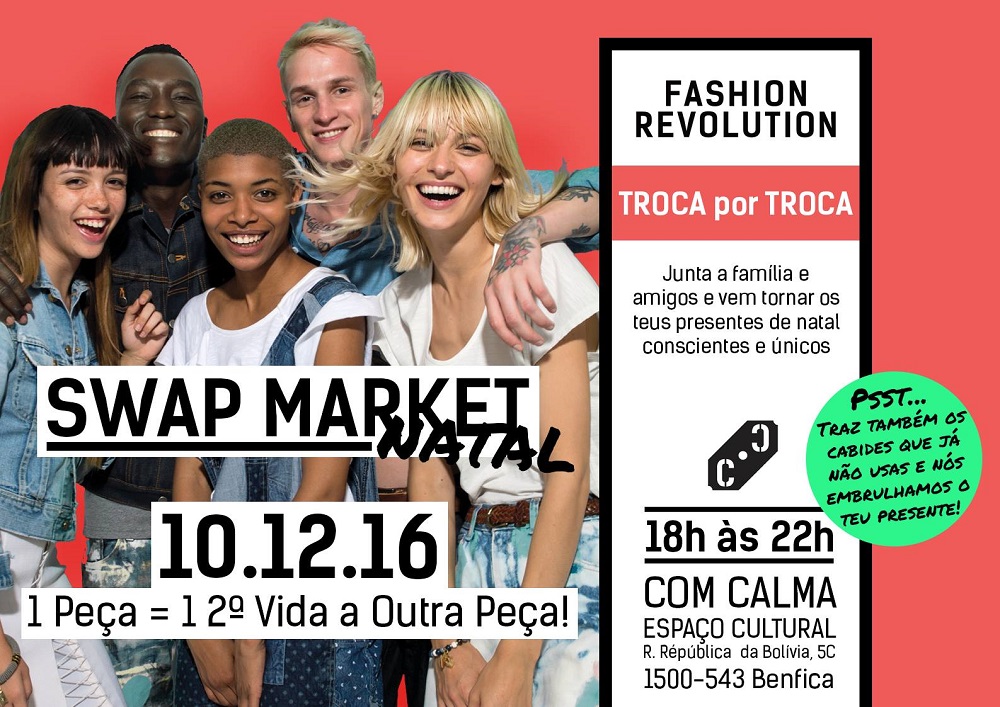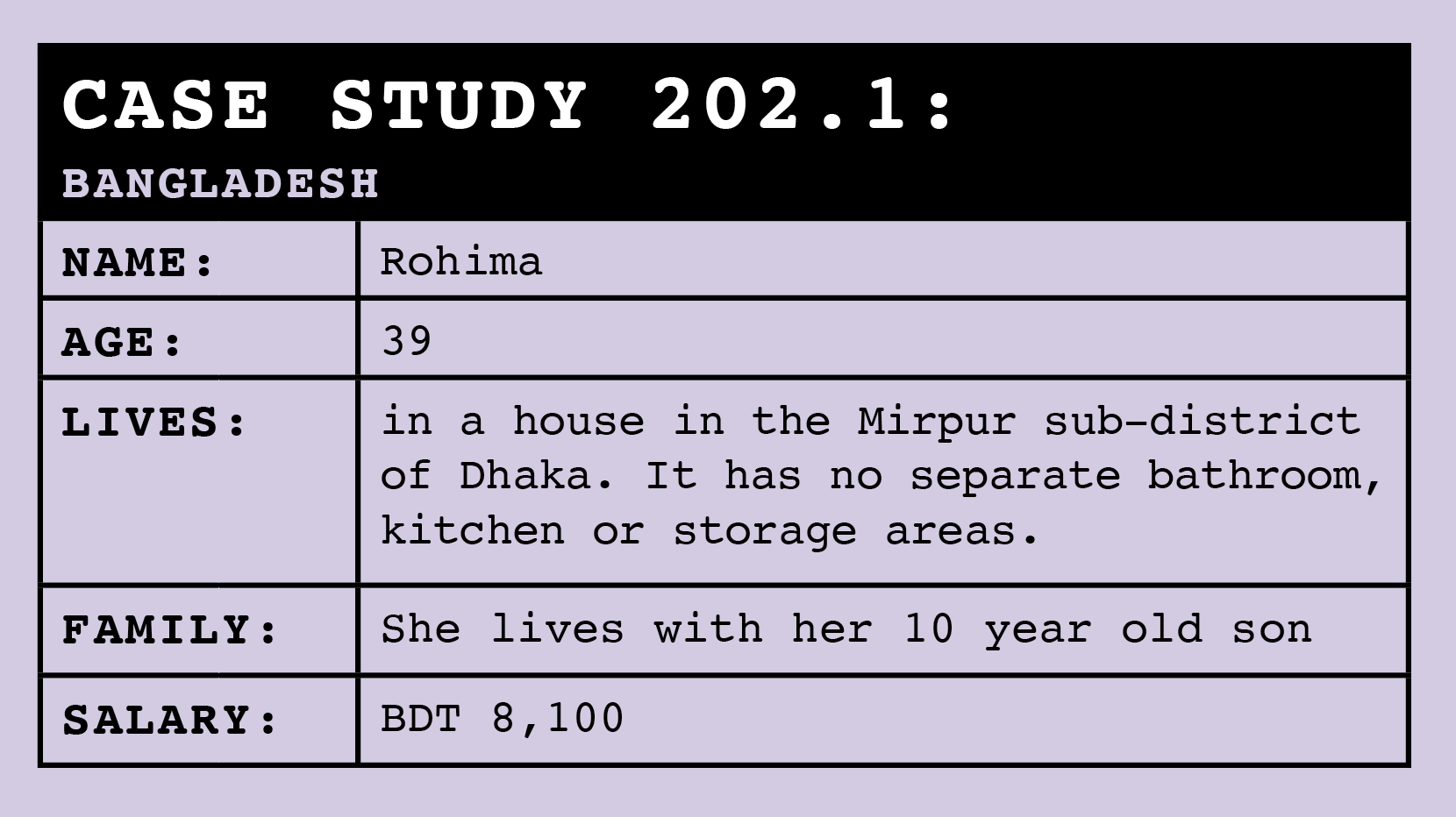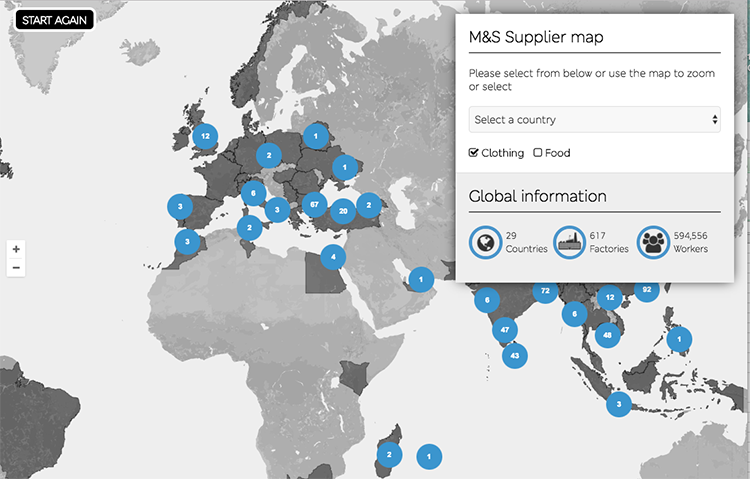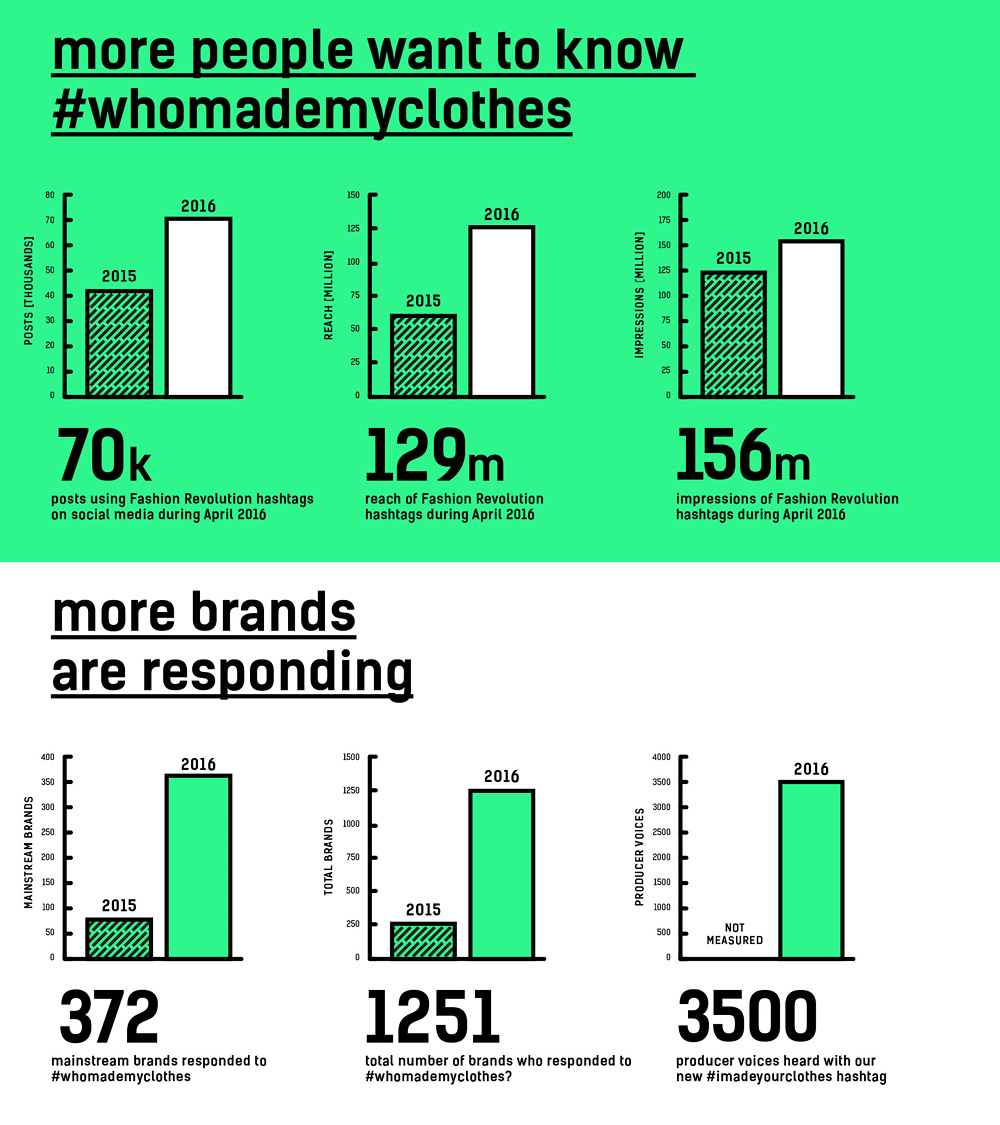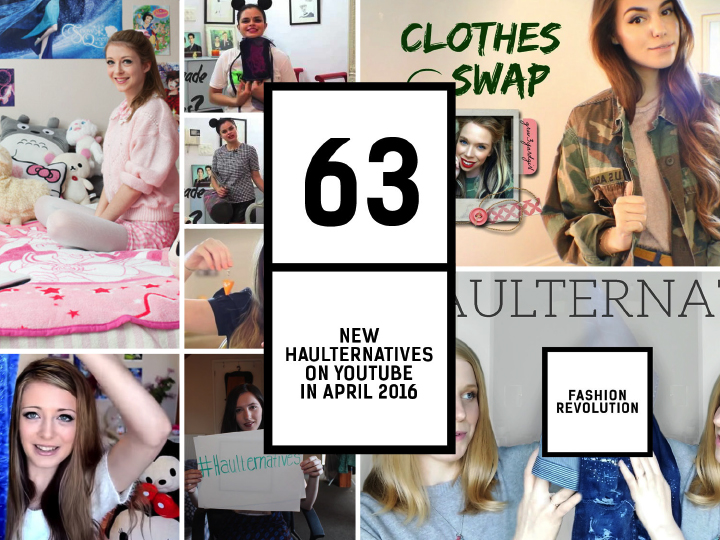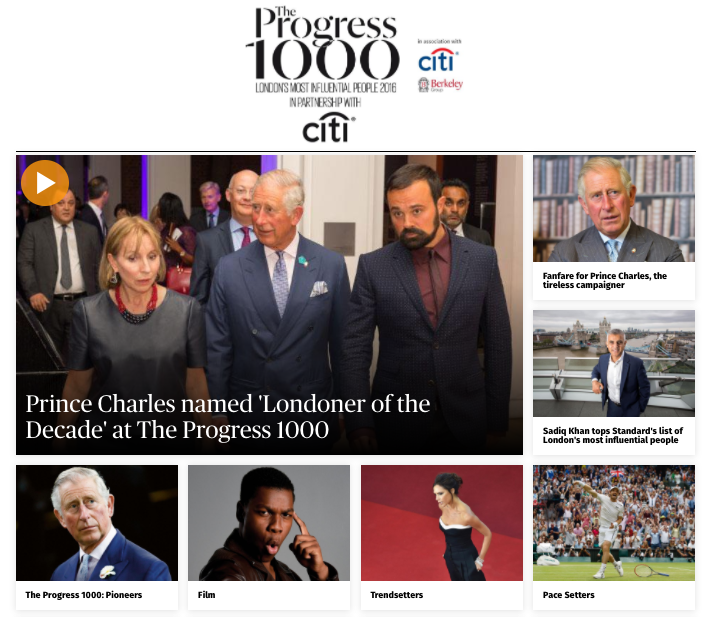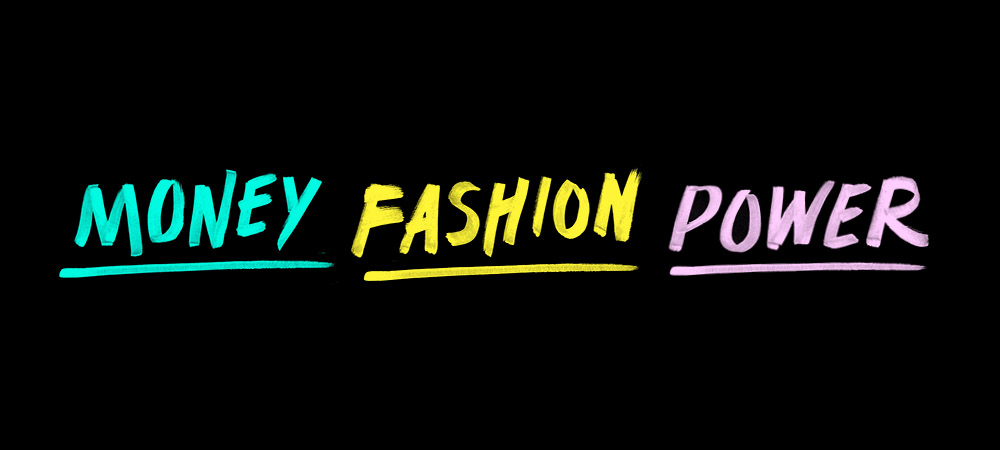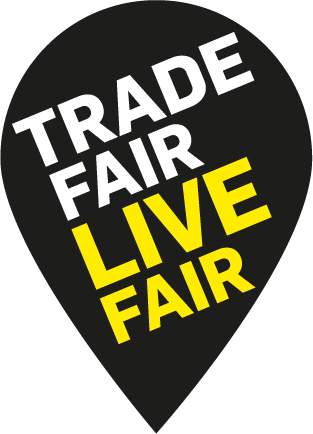WHY SHOULD BRANDS PUBLISH SUPPLIER LISTS?
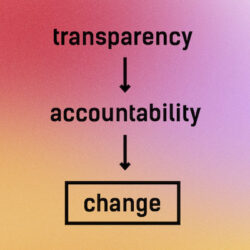
Publicly disclosed supplier lists are helping trade unions and workers rights organisations to address and fix problems which workers are facing in the factories that supply major brands and retailers. This sort of transparency makes it easier for the relevant parties to understand what went wrong, who is responsible and how to fix it. It also helps consumers better understand #whomademyclothes.
“Knowing the names of major buyers from factories gives workers and their unions a stronger leverage, crucial for a timely solution when resolving conflicts, whether it be refusal to recognise the union, or unlawful sackings for demanding their rights. It also provides the possibility to create a link from the worker back to the customer and possibly media to bring attention to their issues.” says Jenny Holdcroft, the Assistant General Secretary of IndustriALL Global Union
HAVE WE SEEN AN INCREASE IN BRANDS PUBLISHING SUPPLIER LISTS?
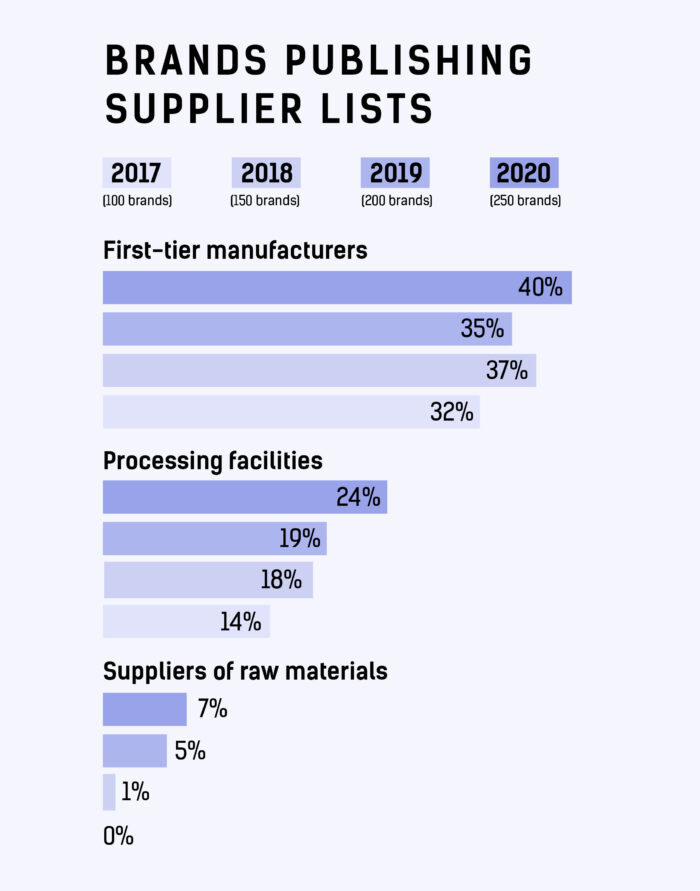
Since we began the Fashion Transparency Index in 2016, we have seen a significant increase in the number of brands publishing their first tier, processing and raw materials suppliers. In our 2020 edition of the Fashion Transparency Index, 101 out of 250 brands (40%) are publishing their first-tier manufacturers, up from 35% in 2019. These are the facilities that do the cutting, sewing and finishing of garments in the final stages of production.
60 out of 250 brands (24%) are publishing some of their processing facilities, up from 19% in 2019. These are the sorts of facilities that do ginning and spinning of yarn, knitting and weaving of fabrics, dyeing and wet processing, leather tanneries, embroidering and embellishing, fabric finishing, dyeing and printing and laundering.
And, 18 out of 250 brands (7%) are publishing some of their raw material suppliers, up from 5% in 2019. These suppliers are those that provide brands and their manufacturers further down the chain with raw materials such as cotton, wool, viscose, hides, rubber and metals.
HOW MANY BRANDS ARE NOW PUBLISHING SUPPLIER LISTS?
We have looked at large brands (over £36 million annual turnover) beyond the Fashion Transparency Index to count the number that are publishing lists of their suppliers. Below, you will find a list of over 200 brands that are publishing their first-tier manufacturers, 60 brands that are publishing their processing facilities and 21 brands that are publishing their raw material suppliers.
We are always pushing brands to provide more information about the people who make their clothes, and you can encourage them to do so too. Always ask the brands you buy #WhoMadeMyClothes. You can do this by tagging your favourite brands on social media and using this hashtag, or you can use our automated email tool to get in touch with them directly.
Brands who publish first-tier supplier lists
First-tier/ Tier One/ manufacturing suppliers are those which have a direct relationship with buyer e.g. production units, Cut Make Trim (CMT) facilities, garment sewing, garment finishing, full package production and packaging and storage.
& Other Stories (H&M group)
Abercrombie & Fitch
Adidas
ALDI-Nord
ALDI SOUTH
Amazon
Ann Taylor
Anthropologie (URBN)
ARROW (PVH)
ASICS
Aldi North
ASOS
Athleta (GAP Inc.)
Autograph (Speciality Fashion Group)
Banana Republic (GAP Inc.)
Berghaus (Pentland Brands)
Berlei (Hanes)
BESTSELLER
BigW (Woolsworth Group)
Black Pepper (PAS Group)
Boden
Bon Prix
Bonds (Hanes)
Boxfresh (Pentland Brands)
Brand Collective
Brooks Sports
Burton (Arcadia)
C&A
Calvin Klein (PVH)
Champion (Hanes)
Cheap Monday (H&M group)
City Chic (Speciality Fashion Group)
Clarks
Cole’s (Wesfarmers Group)
Columbia Sportswear Co.
Converse (NIKE, Inc)
Cos (H&M group)
Cotton:On
Crossroads (Speciality Fashion Group)
Curvation (Fruit of the Loom, Inc.)
David Jones
Debenhams
Designworks (PAS Group)
Disney
Dorothy Perkins (Arcadia)
Dressmann (Varner)
Eagle Creek (VF Corporation)
Eastpak (VF Corporation)
Eileen Fisher
El Corte Inglés
Ellesse (Pentland Brands)
Esprit
Evans (Arcadia)
Factorie (Cotton On Group)
Fanatics
Fjällräven
Forever New
Free People (URBN)
Fruit of the Loom
G-Star
Galeria Inno (HBC)
Galeria Kaufhof (HBC)
Gap
George at Asda (Walmart)
Gildan
H&M
Hanes
Helly Hansen
HEMA
Hermès
Holeproof Explorer (Hanes)
Hollister Co. (Abercrombie and Fitch Co.)
Hudson’s Bay Company (HBC)
HUGO BOSS
Hurley (NIKE, Inc)
Intermix (GAP Inc.)
IZOD (PVH)
JACK&JONES (BESTSELLER)
Jack Wolfskin
Jacqueline de Yong (BESTSELLER)
JAG (APG & Co)
Jansport (VF Corporation)
Jeanswest
JETS Swimwear (PAS Group)
Jockey (Hanes)
John Lewis
Joe Fresh (Loblaw Companies Limited)
Jordan (NIKE, Inc)
Junarose (BESTSELLER)
KangaROOS (Pentland Brands)
Kathmandu
Katies (Speciality Fashion Group)
Kaufland
Kayser (Hanes)
Kipling (VF Corporation)
Kmart Australia (Wesfarmers Group)
Lacoste
Lee (VF Corporation)
Levi Strauss & Co.
Lidl
Lindex
Littlewoods (Shop Direct)
Loblaw
Loft (Ascena)
Lord & Taylor (HBC)
lucy (VF Corporation)
Lululemon
Majestic (VF Corporation)
Mamalicious (BESTSELLER)
Mammut
Marco Polo (PAS Group)
Marimekko
Marks & Spencer
Matalan
MEC
Millers (Speciality Fashion Group)
Missguided
Miss Selfridge (Arcadia)
Mizuno
Monki (H&M group)
Monsoon
Morrisons (Nutmeg)
Name It (BESTSELLER)
Napapijiri (VF Corporation)
Nautica (VF Corporation)
New Balance
New Look
Next
Nike
Noisy May (BESTSELLER)
Nudie Jeans
Old Navy (GAP Inc.)
Only (BESTSELLER)
Only & Sons (BESTSELLER)
Outerknown (Kering Group)
Outfit (Arcadia)
OVS
Patagonia
Pieces (BESTSELLER)
Pimkie
Playtex (Hanes)
Primark
Prisma (S Group)
Puma
R.M Williams
Razzamatazz (Hanes)
Red or Dead (Pentland Brands)
Reebok (Adidas Group)
Reef (VF Corporation)
REI Co-op
Review (PAS Group)
Rider’s by Lee (VF Corporation)
Rio (Hanes)
River Island
Rivers (Speciality Fashion Group)
Rock & Republic (VF Corporation)
rubi (Cotton On Group)
Russell Athletic (Fruit of the Loom, Inc.)
Sainsbury’s – Tu Clothing
Saba (APG & Co.)
Sak’s Fifth Avenue (HBC)
Selected (BESTSELLER)
Sheer Relief (Hanes)
Sisley (Benetton Group)
Smartwool (VF Corporation)
SPALDING (Fruit of the Loom, Inc.)
Speedo (Pentland Brands)
Sportscraft (APG & Co.)
Supré (Cotton On Group)
Target
Target Australia (Wesfarmers Group)
Tchibo
Ted Baker
Tesco
The North Face (VF Corporation)
The Warehouse
Timberland (VF Corporation)
Tod’s
Tommy Hilfiger (PVH)
Tom Tailor
Topman (Arcadia)
Topshop (Arcadia)
Under Armour
Uniqlo (Fast Retailing)
United Colours of Benetton (Benetton Group)
Urban Outfitters (URBN)
Van Heusen (PVH)
Vanity Fair Lingerie (Fruit of the Loom, Inc.)
Vans (VF Corporation)
Vassarette (Hanes)
Vero Moda (BESTSELLER)
Very (Shop Direct)
Victoria’s Secret (L Brands)
Vila Clothes (BESTSELLER)
Voodoo (Hanes)
Wallis (Arcadia)
Warner’s (PVH)
Weekday (H&M group)
White Runway (PAS Group)
Wrangler (VF Corporation)
Yarra Trail (PAS Group)
Y.A.S. (BESTSELLER)
Zalando
Zeeman
Total: 204
Brands who publish processing facilities list
Processing facilities (often referred to as facilities beyond tier 1) are involved in the production of clothing whose activities could involve ginning and spinning, knitting, weaving, dyeing and wet processing, tanneries, embroidering, printing, fabric finishing, dye-houses and laundries.
Adidas
Anthropologie (URBN)
ASICS
ASOS
Banana Republic (GAP Inc.)
Bon Prix
Burton (Arcadia)
C&A
Calvin Klein (PVH)
Champion (Hanes)
Clarks
Converse (NIKE, Inc)
Debenhams
Disney
Dressmann (Varner)
Eileen Fisher
Ermenegildo Zegna
Esprit
Free People (URBN)
Gap
Gildan
G-Star RAW
H&M
Hanes
Helly Hansen
HEMA
Hermès
Jack Wolfskin
Jordan (NIKE, Inc)
Kaufland
Levi Strauss & Co.
Lindex
Lululemon
Monsoon
New Balance
New Look
Nike (Nike, Inc.)
Nudie Jeans
Old Navy (GAP Inc.)
Patagonia
Puma
Reebok (Adidas Group)
Russell Athletic (Fruit of the Loom, Inc.)
Sainsbury’s – Tu Clothing
Target
Tchibo
Tesco
The North Face (VF Corporation)
The Warehouse
Timberland (VF Corporation)
Tommy Hilfiger (PVH)
Topman (Arcadia)
Topshop (Arcadia)
Uniqlo (Fast Retailing)
United Colours of Benetton (Benetton Group)
Urban Outfitters (URBN)
Van Heusen (PVH)
Vans (VF Corporation)
Warner’s (PVH)
Wrangler (VF Corporation)
Total: 60
Brands who publish raw materials supplier list
Raw material suppliers are those which provide the commodity for the production of clothing e.g. cotton, wool, viscose or polyester.
ASOS
Balenciaga (Kering)
Bottega Veneta (Kering)
C&A
Eileen Fisher
Ermenegildo Zegna
Esprit
Gucci (Kering)
H&M Group
Lululemon
Marks & Spencer
Morrisons (Nutmeg)
Nudie Jeans
Patagonia
SAINT LAURENT (Kering)
Tesco
The North Face (VF Corporation)
Timberland (VF Corporation)
United Colours of Benetton (Benetton Group)
Vans (VF Corporation)
Wrangler (VF Corporation)
Total: 21
Please note: We are not endorsing the brands included in this list; this is not a ‘seal of approval.’ While publishing supplier lists is a necessary step towards greater transparency and improved conditions in fashion supply chains, it does not guarantee ethical business practices. However, we hope you find this list informative and continue to ask brands #whomademyclothes.
This list is not exhaustive and only accurate as of April 2020; if you are aware of other large brands (over £36 million annual turnover) that are publishing their suppliers, please let our Policy and Research team know at transparency@
On the 12th Day of Christmas
12 months of press coverage.
1619 press articles generating Circulation (Potential Viewership) of 29.7 billion, according to Meltwater press figures.
On the 11th Day of Christmas
11 steps to creating a revolution.
Blueprint for Revolution by Srdja Popovic is one of the books and reports reviewed in Fashion Revolution fanzine #001 Money Fashion Power. Through 72-pages of poetry, illustration, photography, graphic design and editorial, this collectible zine explores the hidden stories behind your clothing, what the price you pay for fashion means, and how your purchasing power can make a positive difference. Published in January and available for pre-order now.
On the 10th Day of Christmas
Business of Fashion published the 10 Commandments of New Consumerism
BoF outlined the 10 factors that define new consumerism and what this change in shopping habits could mean for fashion brands and retailers. BoF said “For decades, a brand’s only priority was to create the best possible product at the most competitive price to ensure sales. But as consumers develop a more comprehensive understanding of issues like sustainability, authenticity and transparency, brands and retailers are being forced to change the way they sell in order to survive”. Coming in at no. 1 in the 10 Commandments for New Consumerism is: Provide Transparency Into Your Business Practices.
On the 9th Day of Christmas
92 countries around the world were involved in Fashion Revolution Week in April 2016.
And even more countries have joined the movement since April. Find out what’s happening in your country.
On the 8th Day of Christmas
Over 800 Fashion Revolution events around the world.
Clothes swaps, film screenings, exhibitions, fashion shows, panel discussions, selfie walls, Fashion Question Time in the UK Houses of Parliament and more. Find out what’s happening in your country on our Events page.
On the 7th Day of Christmas
7th most successful global PR campaign in The Global SABRE awards.
The Global SABRE awards honour the world’s 40 top public relations programs of the past year. Ketchum came 7th for the Fashion Revolution Germany video, €2 T-Shirt – a Social Experiment which has received over 7.6 million views to date.
On the 6th Day of Christmas
6.30am Wake Up, 1.30am Sleep.
Garment Worker Diaries, lead by Microfinance Opportunities and funded by C&A Foundation, is gathering firsthand accounts of 540 garment workers in Bangladesh, Cambodia and India. Researchers are collecting information on what these women earn, spend, put in and take out of their savings, borrow from others, and lend to others. We are also learning about their daily schedules and what kind of conditions they’re working in at the factory. Over the course of 12 months we will have a better understanding how these garment workers survive on low pay and deal with problems such as chronic pain, harassment or illness. Find out more the daily routine of a garment worker, how much she earns and how much she spends in a week in our Money, Fashion, Power fanzine.
On the 5th Day of Christmas
5 out of the 40 brands on our inaugural Fashion Transparency Index were publishing their factory lists.
However, since April we have seen Gap, Marks and Spencer, VF Corporation (who owns The North Face, Vans, Wrangler and others) and Jeanswest publish a list of the factories where their clothes are stitched and Inditex, who own Zara, Massimo Dutti and Pull and Bear among other brands, has published a list of the facilities where its clothing is dyed, washed, printed and where leather is tanned.
The 2017 Fashion Transparency Index will cover 100 of the world’s largest fashion brands.
4 campaign hashtags used during 2016
#FashRev (general), #whomademyclothes (ask to brands) #imadeyourclothes (producer photos and stories) and #haulternative (alternative ‘hauls’) generating 156 million impressions during Fashion Revolution Week.
For 2017 our hashtags will be #FashionRevolution, #whomademyclothes, #imadeyourclothes and #haulternative.
On the 3rd Day of Christmas
3.11 million views of Fashion Revolution videos in 2016.
Fashion Revolution Brasil’s Fashion Experience: o outro lado da moda, Fashion Revolution Germany’s The Child Labour Experiment, #Haulternatives by Cutie Pie Marzia and Maddu, plus over 60 more #Haulternative and Love Story videos posted by people around the world.
Find out how to make your own #Haulternative and Love Story videos on our website.
On the 2nd Day of Christmas
2 founders of Fashion Revolution, Carry Somers and Orsola de Castro were named amongst the most influential people in London 2016.
Carry Somers and Orsola de Castro were listed in the Evening Standard’s Progress 1000 Awards in the Equality Champions category which included the Duke and Duchess of Cambridge, the Duchess of Cornwall, David Beckham, Richard Gere and Stephen Fry,
On the 1st Day of Christmas
One global campaign changing the fashion industry.
Please be a part of the Fashion Revolution and help to make our voice even louder in 2017. Be Curious. Find Out. Do Something About It.
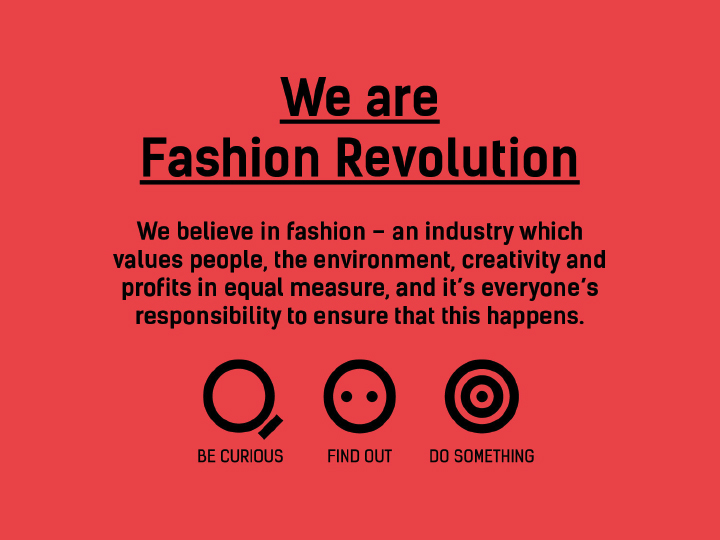
Help us launch our 2017 theme MONEY, FASHION, POWER.
Please donate to keep strengthening the movement.
Yesterday, the owner of the Rana Plaza factory complex and 41 other individuals were charged with murder.
In the hope that the justice system in Bangladesh will actually implement real punishment (and not succumb to internal corruption to invalidate the charges) and that the culprits will actually adequately pay for their crimes, the Twitter world has gone crazy in advocating real justice for the perpetrators, the offending big brands and even the consumers, highlighting that we are all somehow complicit in the bloodbath that was the Rana Plaza catastrophe in 2013.
Without wanting to take anything away from this eloquent and forward thinking conversation, the truth is that the big brands and the corporations are only one facet of the problem, and the reality is that there is another, unspoken abyss of so called ‘white labels’ selling unbranded clothes and accessories in vast quantities to smaller online retailers, to shops, to market stalls and even reputable fashion brands and boutiques all over the world.
These ‘white label’ sales are orchestrated by middlemen, tertiaries and distributors that are faceless, but who still peddle in misery, taking advantage of an unregulated system where the lack of transparency allows them to make massive profits and benefit from a convoluted and complicated supply chain that doesn’t safeguard workers and the environment, because there are no rules.
It goes two ways: just as the big brands cannot publish in full their supply chain contractors (and sub contractors) beyond first tier, mass producers have no way of knowing who they are selling to.
Many factory owners and brokers are unspeakably wealthy, have their own brands, often several, and many of their associates and partners operate also outside of the big brands by selling almost identical products to another invisible supply chain that we know nothing about because it is not branded, it is not part of the world of corporations and big brands, but it is nevertheless thriving.
To implement real justice, we need to understand that the issues are way more complicated than what we have been told so far, and that there are other culprits out there, who have been an intrinsic part in creating a system which is hell bent on exploitation and degradation.
For many years I was a designer with my own fashion label, and as such it was assumed that I would have the need to produce garments. I still receive dozens of emails from brokers and distributors, advertising the benefits of making cheap, high quality products through factories that I would never need to have a direct relationship with because they (the brokers and distributors) would look after it on my behalf.
I was, I still am, quite shamelessly, offered services that imply that I could grow my business rapidly, buying on trend, untraceable products, (onto which I could then apply my own label) to maximise my own profits. These emails come from companies operating from China, Bangladesh, Cambodia and Vietnam.
Premium brands, outlet stores and luxury boutiques are also taking advantage of this distribution stream, relying on the fact that their customer is no longer capable to discern a truly beautifully made piece from any old crap. This is even more sinister, as those brands and boutiques are able to achieve massive margins on a product that has cost them next to nothing.
How do we expose the fact that everybody is taking advantage of this rotten system badly in need of reform?
Of course major brands need to be accountable, and murder and ecocide are the correct words to be used to describe this scenario, but the fact is that we aren’t exposing the whole truth, because the whole truth goes deeper than anywhere we have reached so far.
The sad oxymoron of this industry right now is that the most scrutinised brands are also the ones that are investing the money and resources to actually begin to implement innovation (after all, they have a vested interest in innovating and saving their reputation), but for the health of this industry, we mustn’t stop at the big brands, but continue to question the industry and ensure that we take a much deeper look, at how we buy, who we buy from, why we continue to buy so much, and what are the real solutions to implement a positive change.
By the sheer power of their consumer visibility, the big brands and corporations should be held as an example (as I hope the owner of the Rana Plaza and his corrupt associates will be) but to put the blame solely on the household names doesn’t actually give a clear picture of the state of the industry as a whole.
What we are doing right now is to vilify a few, without exposing the rest of the problem, effectively ignoring a whole load of other actors, who are as culpable, but completely escaping our judgement.
We are letting them off scot-free.
Sure, it’s the obvious starting point, but by flagging the usual suspects we are giving them the opportunity to inject money, employ experts, and greenwash their operations, without exposing the system that has allowed them and so many others to behave abominably, outside of our scrutiny, just because we are less familiar with their names.
We need to keep advocating for governments to impose regulations, because voluntary codes of conduct are clearly not sufficient: it is only with the correct implementation of decent humane and environmental standards that we can change the fashion industry, and start to ameliorate this awful mess.
